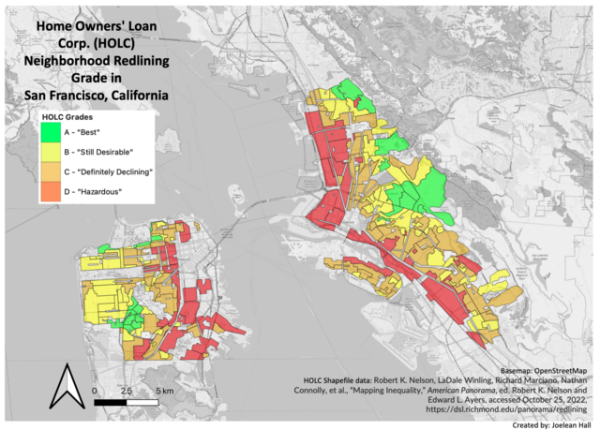The American promise of equality is a lie – a false claim often made by politicians during election campaigns. The truth is that the so-called capitalist system is largely responsible for limiting this promise.
These limitations affect the quality of education, housing, healthcare and other essential services for the working class, which makes up roughly 52% of Americans, while 19% are identified as upper class and 29% as lower class, according to Pew Research Center.
To be more specific, let’s identify what the term “capitalism” means. It has been known for decades as an economic system in which private individuals or businesses own capital goods. Business owners employ workers who receive only wages, meaning laborers do not own the means of production but work on behalf of capital owners.
Meanwhile, the laws and policies often provide luxury housing and superior services to the wealthy while restricting the working class from accessing similar quality of life. For instance, U.S. tax laws such as the mortgage interest deduction give wealthy homeowners a major financial edge by lowering their tax bills and boosting property values.
“The American capitalist system reinforces social barriers by rewarding those who already have resources while limiting opportunities for those without.”
Those benefits help the rich grow their wealth faster, according to the Brookings Institution. Low-income and working-class families receive no similar support, leaving them at a disadvantage in buying homes or building assets.
The result is a widening gap between rich and poor, reinforced by policy choices that favor property owners.
The capitalist system has established an obvious separation between classes, even in residential areas, reinforcing barriers in society, health, education and public services. One of the foundations of this system is the limitation of the working class’s access to the means of production, home ownership, or even mortgages, while providing facilities and privileges for the wealthy.

This occurred in the 1930s when the Home Owners’ Loan Corporation (HOLC) established redlining maps. As Daniel Aaronson notes in “The Effects of the 1930s HOLC “Redlining” Maps”, minority and low-income neighborhoods were marked as “hazardous,” systematically denying them loans and investment.
The impact of the redlining maps is not limited to reinforcing social barriers, but also affects the economy. The writer David Brooks argues In his article “We Are Ruining America” that residential zoning restrictions have a devastating effect on economic growth nationwide and play a crucial role in widening inequality.
The system rewards the rich by providing them with the best housing and community services, while the poor sink deeper into poverty. It prevents them from advancing in life and isolates them from productive environments, effectively concentrating wealth in the hands of a small elite.
Some capitalism supporters argue that it’s a good way to drive innovation and economic growth for everyone. Whereas the reality is that the growth is uneven. aronson states that high-income communities attract more investment and resources, while low-income and minority neighborhoods face disinvestment, redlining and fewer opportunities.
Education is a significant factor that represents the effect of capitalism. We can’t ignore that the wealth is concentrated in the hands of a few; the capitalist system ensures that the same group continues to secure better education and opportunities.
The education access system has limitations based on socioeconomic conditions. Particularly, students with low income or who come from non-educated backgrounds could receive fewer resources and education. Brooks states that, “70% of students in the nation’s 200 most competitive schools come from the top quarter of income distribution.”
This demonstrates that top-ranked universities offer privileged access primarily to the elite. Meanwhile, countless hardworking students who dream of admission are left behind. By repeating this pattern.
Furthermore, many employers continue to prefer graduates from elite institutions instead of offering equal opportunities to others, perpetuating the cycle of inequality.
Supporters of capitalism often argue that it rewards hard work, creates equal opportunities, drives innovation, and ensures fair wages. In reality, these claims are limited. To be born in poverty or for a working middle class family reduces your chances of getting a better life or becoming rich. As Tom Hertz reports in “Understanding Mobility in America”, “Children from low-income families have only a 1 percent chance of reaching the top 5 percent of the income distribution, versus children of the rich who have about a 22 percent chance.”
This shows that the capitalist system produces inequality across generations. Undoubtedly, these challenges reflect the struggle of the working class, which tries as much as possible to break out of the cycle in which it has been trapped. However, the policies that granted access to investment, housing in high-quality areas, and superior education and resources for the wealthy class have created a serious obstacle to moving forward.
It was not the choice of the poor to be born in poverty, nor of the rich to be born in wealth. Yet the capitalist system is solely responsible for making the social gap wider. By rewarding the rich for their wealth, admitting them into the best universities, guaranteeing them jobs in the top companiesand allowing them to live in the finest neighborhoods among their class peers, the cycle repeats itself through their children.
Meanwhile, the working class is denied opportunities in education, employment, and housing, which limits social mobility and prevents them from achieving wealth and financial independence.
While there are exceptions, they are limited and cannot be generalized. A reformed system of wealth distribution, one that prioritizes equal opportunity over inherited privilege, would not harm the economy. On the contrary, it would expand opportunity based on effort and skill, improve health and education outcomes, reduce homelessness, and guarantee quality services across all communities.
Every individual deserves the chance to succeed, and only through reform can responsibility shift from systemic barriers to personal choice and determination.



